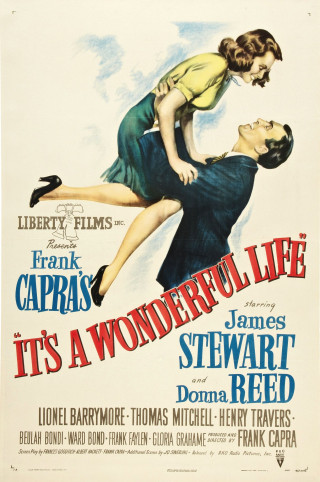Beyond the inspirational qualities and memorable moments that make the movie a beloved holiday staple, It’s a Wonderful Life can be explored and viewed in another way: as a presentation of history on the screen. In 2015, staff at the Smithsonian’s National Museum of American History started the History Film Forum to explore film as public history. Many Americans and people from all over the world learn history from movies; the discussions we’ve hosted among scholars, filmmakers and audiences explore that dynamic in valuable and meaningful ways. This year, the forum examined both narrative and documentary films ranging from Questlove’s remarkable Summer of Soul on the 1969 Harlem Cultural Festival to The Courier with Benedict Cumberbatch, which looks at the thrilling tale of a Cold War-era spy. Every year, films such as these are explicitly intended to present historical stories and impress upon viewers a little-known narrative of the past. But other films that don’t have that educational intention nevertheless end up edifying (or miseducating) their viewers about history, particularly when watched decades after their release. In fact, as my colleague, the museum’s entertainment curator Ryan Lintelman, said in our recent discussion on It’s a Wonderful Life, “Some of the movies that are seen by the most people around the world probably have had the most impact even though they’re sometimes not directly dealing with weighty political issues.”
At the beginning of the film, after pleas on behalf of George reach the heavens, two angelic figures converse on how to respond. The angels, Joseph and Franklin, who appear as clusters of light in space, bring in an apprentice named Clarence, a clockmaker in life, who hasn’t yet earned his wings by offering help to a human. Though Clarence is eager to save George as he struggles with depression and suicidal thoughts, Franklin instructs Clarence to sit down and tells him, “If you’re going to help a man you want to know something about him, don’t you?” As Clarence gets a background lesson on George’s life, beginning with his brother’s fall through the ice in 1919 through the end of World War II, the audience gets Frank Capra’s version of small-town American history.
With a panel of experts including the Smithsonian’s Lintelman, historian Jason Higgins, film critic Nell Minow, Leo Landis, curator of the State Historical Society of Iowa (the home state of actor Donna Reed who played Mary Bailey), and Reed’s daughter, Mary Owen, we explored American history as presented in a holiday favorite.
